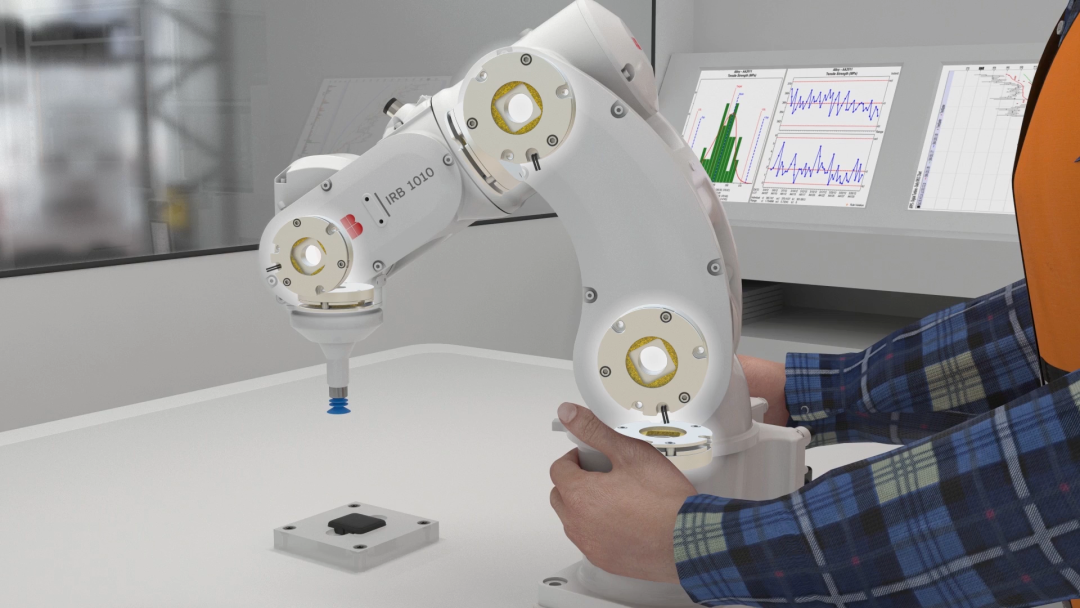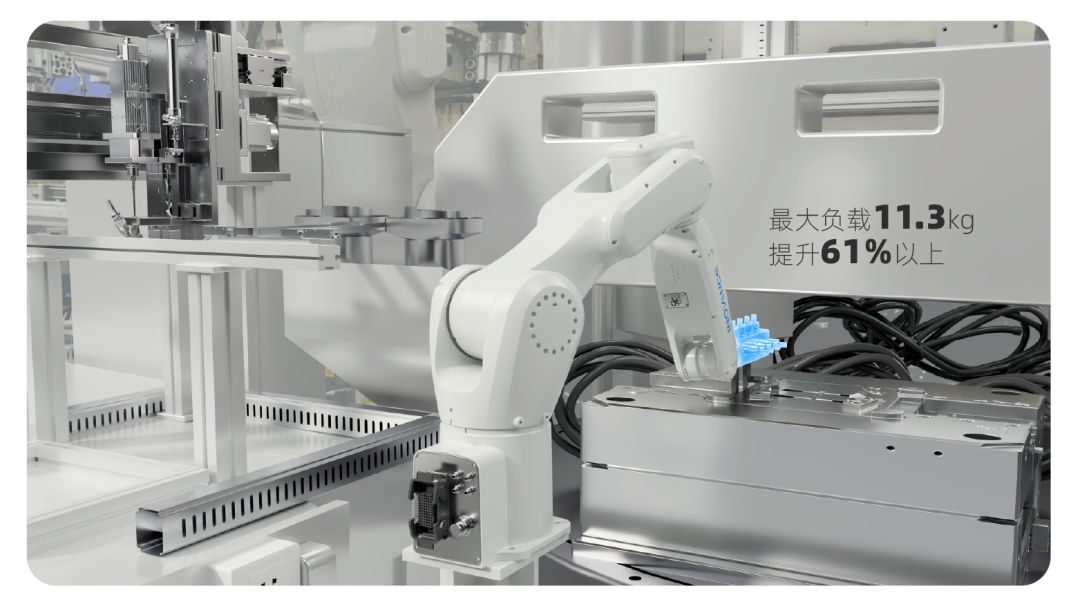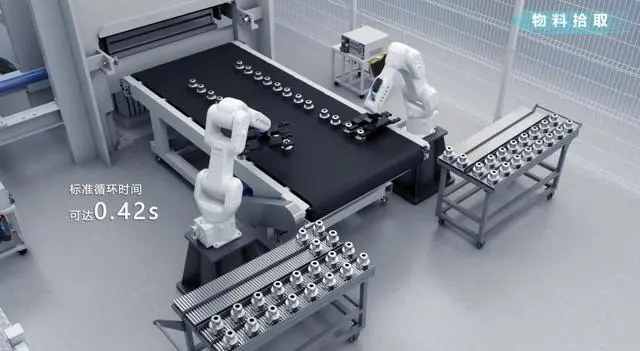Huichuan Technology’s New Desktop-Level Robots: IR-R4 and IR-R11
Huichuan Technology has unveiled its new desktop-level six-axis robots, the IR-R4 and IR-R11. These robots have a payload of 4.0kg and 11.3kg, respectively, and can be applied in industries such as 3C, photovoltaics, and assembly and gluing applications. The IR-R4 boasts a cycle time of only 0.34 seconds, exceeding a 24% improvement, and achieving a repeat positioning accuracy of ±0.01mm. The IR-R11 has a high wrist payload capacity of 11.3kg, making it suitable for various workpiece sizes.

ABB’s Smallest Desktop-Level Industrial Robot: IRB 1010
ABB has introduced its smallest desktop-level industrial robot, the IRB 1010. It has a working range of 370mm and occupies a footprint of only 135mm × 250mm. Despite its compact size, it can handle a maximum payload of 1.5kg, achieve a repeat positioning accuracy of 0.01mm, and reduce energy consumption by 20%. This small yet high-performance robot will be an ideal choice for electronic manufacturers aiming to increase production capacity.
Adept’s New Heavy-Duty Desktop Robot Series
Adept has introduced a brand-new series of heavy-duty desktop robots with a radius ranging from 944mm to 1291mm. The standard gantry cycle time is 0.42 seconds, and the repeat positioning accuracy is 0.02mm. These robots can handle a payload of up to 12kg and perform high-speed operations. They are applicable in industries such as automotive electronics, new energy, and 3C electronics for tasks such as polishing, material handling, and assembly.

The Rising Popularity of Desktop Robots
Desktop robots, known for their small size, low cost, and convenience, have gained popularity in various industries. Initially, desktop-level robots had limitations such as poor accuracy, slow speed, and low force, but advancements in technology have addressed these issues. Now, desktop robots find applications in industries like 3C, batteries, photovoltaics, PCBs, plastics, and metal components for tasks such as polishing, material handling, gluing, and assembly.

The Huge Market for Desktop Robots in Education
The compact size and user-friendly nature of desktop robots make them ideal for educational purposes. With a shortage of talent in the robotics field, educational institutions are incorporating desktop robots into their teaching and research activities. The government supports the development of robotics programs, and the popularity of robotics engineering majors is on the rise. Desktop robots serve as practical resources for students to learn about robotics and programming.
Government Support for Robotics Education
The government provides loans and funding for equipment purchase, upgrades, and renovations in educational institutions. The establishment of special loans for equipment upgrades presents an opportunity for desktop robots used in education. Desktop robots can become the infrastructure for robotics education, offering hands-on experience to students and preparing them for careers in robotics.
Future Market Potential
Compact and flexible desktop robots have the potential to be widely used in industries with narrow production spaces, small workpiece sizes, and high requirements for flexible manufacturing. Additionally, they can serve as valuable educational tools. The future market for desktop robots is promising, both in industry and education.
 6G Controls - Leading Supplier of New & Original PLC 、DCS Parts and Automation Controller
6G Controls - Leading Supplier of New & Original PLC 、DCS Parts and Automation Controller
